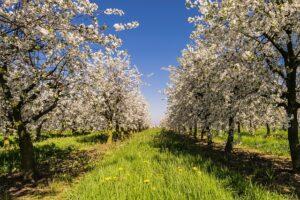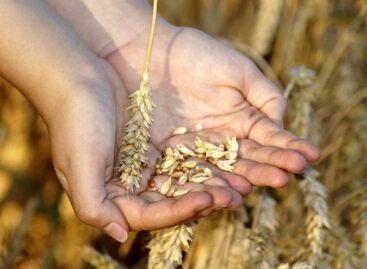Dramatic spring frost: fruit growers’ prospects worsen, nationwide frost damage hits plantations
At the beginning of April, an air mass of arctic origin reached Hungary, bringing brutal overnight cooling. The cold wave caused serious damage to domestic orchards, especially in the northeastern part of the country, where a significant part of the fruit-growing areas are located. Farmers defended themselves, but in many cases they were helpless against the record-breaking frost.
 The air of arctic origin arriving behind a strong cold front on Saturday (April 5) had already made its impact felt by Sunday: light frost developed in a large area. By Monday morning, the cooling had become nationwide, with values between -1 and -6 degrees Celsius being measured, and in fact, the temperature even dropped below -8 degrees in several growing regions – writes fruitveb.hu.
The air of arctic origin arriving behind a strong cold front on Saturday (April 5) had already made its impact felt by Sunday: light frost developed in a large area. By Monday morning, the cooling had become nationwide, with values between -1 and -6 degrees Celsius being measured, and in fact, the temperature even dropped below -8 degrees in several growing regions – writes fruitveb.hu.
This temperature drop has a damaging effect regardless of the fruit variety, especially if it persists for a long time. In recent days, the frost effect lasted for 12 hours, of which 6-8 hours were in the critical temperature range for plant damage, which can cause serious crop losses.
Affected species and regions
The northeastern part of the country, where two-thirds of the domestic fruit-growing areas are located, is most severely affected. Early stone fruits – such as apricots and almonds – have already bloomed across the country, and the flowering period of peaches, sour cherries, cherries and plums is currently underway. These species are particularly sensitive to frost at this time, and temperatures below -2 °C can cause significant damage. Based on current data, 90% of fruit-growing areas have suffered frost damage to some extent.
Farmers defended themselves – with little result
Although producers tried to use frost protection – by using heat-generating machines, spraying, fumigation, and wind machines – these methods proved to be insufficient against the extreme cold and its long duration.
The damage assessment is still ongoing, but according to those in the sector, it can already be stated that a significant part of this year’s fruit harvest has been lost. Exact damage figures are expected by the beginning of next week.
Related news
AM: reference prices, average yield data and specific cost savings for the 2025 damage mitigation allowance have been published
🎧 Hallgasd a cikket: Lejátszás Szünet Folytatás Leállítás Nyelv: Auto…
Read more >European Commission proposes €10.8 million in emergency aid to Hungarian farmers to mitigate damage caused by extreme weather
🎧 Hallgasd a cikket: Lejátszás Szünet Folytatás Leállítás Nyelv: Auto…
Read more >AM: Grape and fruit producers affected by spring frost may receive extraordinary support
🎧 Hallgasd a cikket: Lejátszás Szünet Folytatás Leállítás Nyelv: Auto…
Read more >Related news
Christmas shock in commerce: for the first time, we can pay with bank cards in fewer places
🎧 Hallgasd a cikket: Lejátszás Szünet Folytatás Leállítás Nyelv: Auto…
Read more >Hungarian Confectionery Manufacturers Association: trends in 2025 and prospects for 2026
🎧 Hallgasd a cikket: Lejátszás Szünet Folytatás Leállítás Nyelv: Auto…
Read more >Most grocery chains will be open until noon on December 24th
🎧 Hallgasd a cikket: Lejátszás Szünet Folytatás Leállítás Nyelv: Auto…
Read more >






